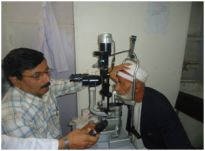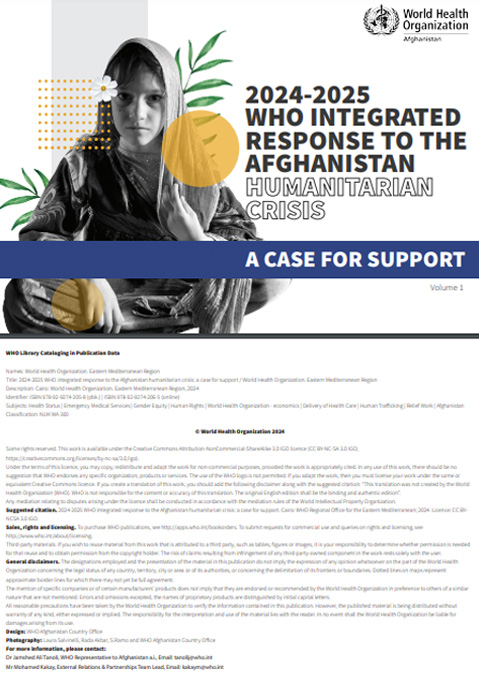
Afghanistan’s health care delivery system has been steadily progressing over the last 10 years with an increasing coverage of primary health care services throughout the country. Eye care is an integral part of primary health care and a component of the basic package of health services.
Preventable blindness
In Afghanistan, it is estimated that over 400 000 people are blind and about 1.5 million are visually impaired. However, if proper eye care facilities were established and maintained, about 80% of blindness is avoidable. Every year, around 25 000 Afghans lose their vision in one eye, a condition mostly affect females.
Cataract remains the main cause of blindness at 60%. Cataract can be operated on through a simple procedure in outpatient clinics, for a cost as low as US$ 40. At present, Afghanistan has a huge backlog of over 200 000 cases of cataract mainly in the rural areas. Only 15 000 cataract surgeries are performed annually; this is much below than the incidence rate of the disease. In addition, injuries are also one of the common causes of blindness in Afghanistan.
Eye care facilities are mostly located in the large cities, such as Kabul, Kandahar, Jalalabad, Mazar, Herat, Kunduz, and are mainly run by nongovernmental organizations, including International Assistance Mission, Fred Hallows Foundation and SERVE, and by the Ministry of Public Health and the Ministry of Higher Education. There is a lack of trained human resources, not only ophthalmologists but also mid-level eye care personnel.
Opportunities
Opportunities for improved eye care come in the form of the establishment of new training centres, run in close collaboration with the King Edward University in Lahore, Pakistan, and the Fred Hollows Foundation. There are also opportunities in new funding and a leadership supportive of improvements in the delivery of eye care services in the country.
Challenges
Some of the challenges facing Afghanistan in the delivery of eye care include:
- blindness is a not a top priority for either the government or donors
- poor access to basic eye care services
- shortage of trained health care providers
- inadequate resources and capacity
- low public awareness.
Partners
The main partners for eye care include the Ministry of Public Health, nongovernmental organizations implementing the basic package of services – the Fred Hollows Foundation, International Assistance Mission and the King Edward University. Activities are coordinated though the National Eye Care Committee chaired by the Ministry of Public Health.
Achievements
Achievements for eye care service delivery in Afghanistan have included:
- the establishment of a national training centre, which was supported by WHO and the Fred Hollows Foundation, to upgrade Kabul Noor Eye Hospital into a National Institute of Ophthalmology and Allied Vision Sciences affiliated with King Edward Medical University in Lahore, Pakistan.
- the launching of free eye camps in 2011 for cataract surgical operations: nine eye camps have been established in nine provinces in which more than 1400 cases of cataract have been operated upon, about 3000 eye glasses have been distributed and about 30 000 people treated for eye illnesses. In 2012, it is planned that more free eye camps will be launched.
Related link
Regional control and prevention of blindness and deafness programme












